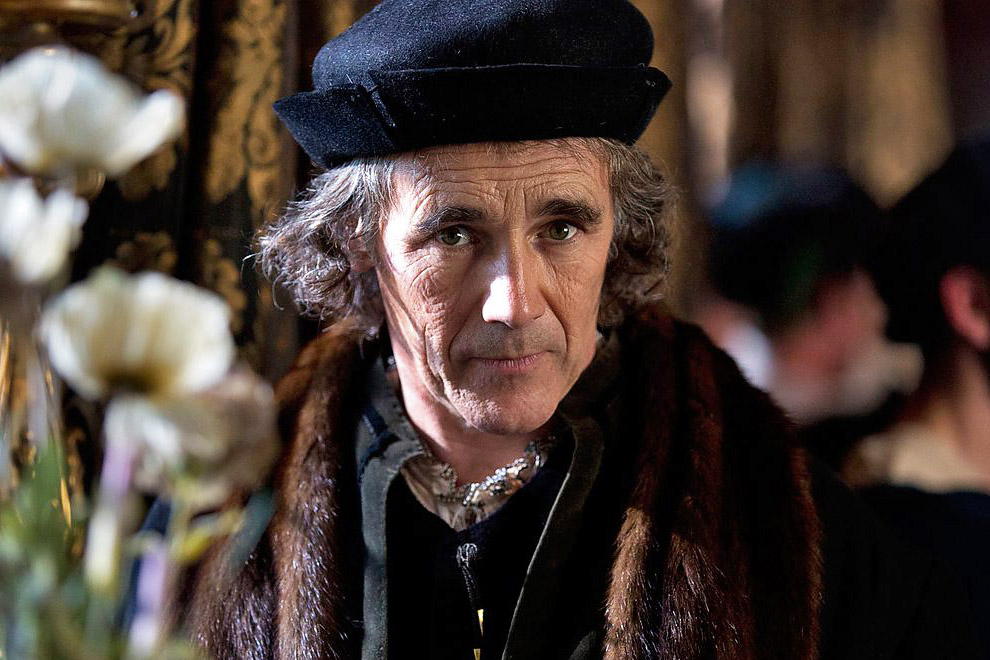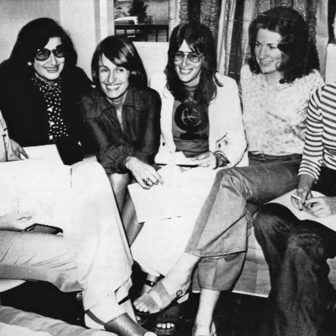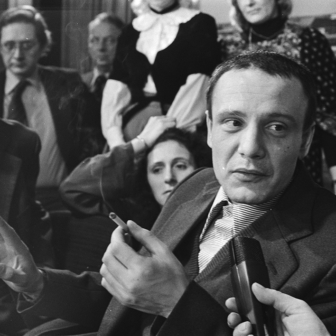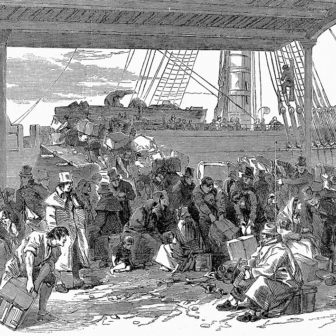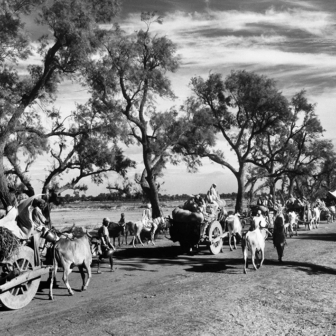With sales reaching four million, a stage adaptation by the Royal Shakespeare Company and a lavish six-part television series screened on the BBC (with a second series already commissioned), Wolf Hall has become a transmedia phenomenon. Australian viewers have had to wait a year for the chance to see the BBC dramatisation, which reaches episode four this week on BBC First and Encore. For those who don’t have pay TV, the DVD will be available from 13 May.
The prospect of a British costume drama on television normally sends me to my study for an evening’s YouTube viewing. And if it involves Tudors I have to beg the rest of the family to turn the sound down. Weird dances performed to pipes and violas, screams from protracted executions, fruity-voiced actors calling each other through echoing halls – it’s all so florid and overblown and fundamentally incredible. Did they really live like that?
Wolf Hall director Peter Kosminsky takes the credibility challenge very seriously. The series was shot in Tudor buildings, some of them the locations in which the historical encounters really did take place. All the rooms used for filming were cleared of their contents and redressed by production designer Pat Campbell to match their original arrangement as living spaces. Curtains and tapestry hangings, beds and bedding, tables and cloths, chairs and cushions and candelabra were all brought in especially for the production. Something like £20,000 was spent on candles, and the cameras were fitted with lenses to allow filming without artificial light. The characters are seen in shafts of daylight streaming through the windows, or at night by the glow of candlelight.
Using designs based on contemporary documentation, the costumes were constructed, hand stitched and embellished according to “original practice” though with some modification of conventional imagery. Henry VIII (Damian Lewis) is not the figure of the Holbein portraits, a solid plain man who can’t live up to his splendid cloaks and tunics, but an athletic presence who exudes charm and danger with every move. It is he who wears the costumes, not the other way about. The jewel-encrusted panels representing scores of hours of human labour, the swing of the heavy velvet cloak, the ermine cape over the vast set of the shoulders – all work in his service to calculated effect.
The strength of the series lies in this capacity to draw in meticulously chosen objects and settings to enhance the dramatic power of a scene. Episode one starts with the child who will become Thomas Cromwell getting a savage beating from his father. A blow to the head sends the boy sprawling across the cobblestones, and the camera moves in on his face. The cobblestones have been specially laid for the occasion, and the camera is hand-held. Acts of violence in Wolf Hall are intimate work rather than visual spectacle. In the novel, this scene goes on for several pages, describing the injuries as they are experienced from the inside. Bruised and concussed, the child has no clear sense of where the damage has occurred, or its extent.
Authenticity is not the same thing as credibility, and these aspects are nearly always in tension in a historical drama. Creating an effective balance is a sophisticated business, and Hilary Mantel has made it her primary commitment. A responsibility to get the history right, she told ABC Radio National’s Michael Cathcart at the Perth Writers Festival, is “the absolute foundation of what I do.”
The dialogue is spare and direct. There are no “thees” or “thous,” no prepared speeches, quaint oaths or elaborate forms of address. In manner and expression, Mantel’s characters are very modern Tudors, studies in the psychology of stress and interpersonal manipulation. Although most of the narrative in the novel comes through dialogue, they say very little – just enough to signal how much of consequence has been left unsaid. Anne Boleyn’s inability to leave her thoughts unspoken marks her from the outset as a short-lived player in this particular game of thrones.
Mantel’s novels are already halfway to television rendition. As a narrator, her eye is a camera, continually focusing, framing and lining up the next close-up. And her way of writing is a gift to the actor. Anne Boleyn’s black eyes, “shiny like the beads of an abacus,” are always in motion as she makes calculations to her advantage. Claire Foy’s wide-eyed look signals anything but innocence, and yet she’s ingenuous. She gives herself away at every turn.
King Henry crosses the room, “Stamp, stamp, stamp in his riding boots… He turns, rather slowly, to show his majesty to better effect: wide, square and bright.” When an actor does this, it is a performance of sheer power. No one else in the kingdom would dare make an entry with this kind of flamboyance. But while his behaviour is all about self-display, it’s the hidden moods of the king that govern destinies. Damian Lewis, known to television audiences most recently for his portrayal of the tormented ex-marine Brody in Homeland, is really much more at home with this very English persona, and he captures perfectly the doubleness of the behaviour code.
Mantel’s central character is the omnicompetent Thomas Cromwell. He can “draft a contract, train a falcon, draw a map, stop a street fight, furnish a house and fix a jury.” In terms of presence, Cromwell is Henry’s antithesis. “He knows how to edge blackly into a room so that you don’t see.” His speech is low and rapid, his manner assured. And yet he is a presence, as the Duke of Norfolk somewhat resentfully observes. But by what right, since he is only the son of a blacksmith? Mark Rylance, an actor’s actor who made his name playing Shakespeare, holds the camera for minutes on end with a quiet power that is all about mind control.
The relationships between these figures are about the intersection of their different kinds of power: regal, strategic, sexual. It’s more of a prism than a triangle, and the courses of other significant figures – Thomas More, Cardinal Wolsey, Anne’s sister Mary, Henry’s first wife Katherine – are refracted through it. This strong central architecture helps pull together the unmanageable range of historical personalities who play a role in the course of events. At the start of the novel, Mantel lists over eighty, almost a third of whom are called Thomas, Henry or Anne. It’s a recipe for confusion that is not always avoided on the page.
Comparisons have been drawn between Wolf Hall and Game of Thrones, and the historical or pseudo-historical mythos of the homicidal monarch certainly seems to be a potent lure for television audiences. In Mantel’s words, the Tudors “colonise the imagination” and Henry is irresistibly compelling as a Bluebeard figure. There are also parallels with the way Les Misérables became a success across different media, pulled out of a somewhat overblown and shapeless historical novel. (And, Booker accolades aside, Wolf Hall the novel is a less than perfect work.) Both portray historical events with an intensely dramatic focus on human destiny.
Interpretations and reinterpretations of the moral landscape of these events are also at stake, and Mantel is engaged with some passion in her chosen area of the history wars. In conversation with Michael Cathcart, she responded to attacks made by two Catholic bishops on her characterisation of Thomas More (played by Anton Lesser with a wonderfully subtle edge). More, said Bishop Mark Davies, was “a man of his time who remains an example of integrity for all times.” The allusions to Robert Bolt’s version in A Man for All Seasons are blended here with deeper Catholic tradition, in which More has been sanctified as (of all things) the patron saint of politicians. Mantel crisply advises the two bishops to go back and read some history, in particular the heresy debates of the 1520s. More was not a 1960s neoliberal but someone for whom heresy persecutions were core business. “He liked burning people.”
The other charge against Mantel is that she has taken a very soft-focus approach to Cromwell, and here she is unapologetic. Of course it is not neutral to tell the story through Cromwell’s eyes, she says, but the fiction writer “has no business with neutrality.” Director Peter Kosminsky goes further, saying he doesn’t care two hoots if the portrayal of Cromwell is not accurate. It is profoundly credible, and that is all that matters.
This looks more than a little like a double standard, especially when so many of the best qualities of the novel and the television drama are those Robert Bolt pioneered in A Man for All Seasons. Perhaps Mantel protests too much, and is betraying some anxiety of influence. Bolt sought to show what it meant to be morally intelligent in the Tudor environment. He broke ground by creating a dramatic structure with a secondary historical player (More could never have been the lead in Shakespearean terms) at the centre of the action. He created convincing dialogue that was at once modern and anchored to an authentic engagement with what these characters expressed and believed. He established the discipline of a slow build, in which critical turning points in the course of events are signalled by small details of behaviour.
And Rylance as Mantel’s Cromwell reminds me more than a little of Paul Scofield as More; he looks and acts like a man for all seasons, albeit one for an audience that has acquired another layer of scepticism and critical distance. He has all the qualities Bolt gave More – gravitas, scholarship, shrewdness, pragmatism, and an uncanny capacity to second guess the caprices of the major players in the game of thrones and weave his way around the violent fallout from vicious tempers.
Mantel brings another level of scholarly acuity and intellectual scepticism to the dramatisation, but what she does is more like a rearrangement of the figures on the chessboard than a redesign of the dramatic world of the Tudors. Bolt’s play was broadcast on BBC Radio in 1954, and made for television three years later, with a stage premier in London in 1960 starring Paul Scofield. The film version, for which Schofield won an Oscar, was released in 1966. Bolt created a Tudor mythos for the mid twentieth century: very English, very dignified and lacking in any real sense of physical danger.
Kosminsky and Mantel bring the danger back, front and centre, and in interview are keen to stress its contemporary resonances. Kosminsky is currently working on a drama about Islamic State for Channel 4, and draws analogies between Tudor Christianity and contemporary Islam, suggesting that the maturation period is about the same, and that beheadings and burnings are symptomatic of a certain phase of development. The implications here are troubling. Any suggestion that Catholicism has acquired some kind of maturity in comparison with Islam would not stand up against the testimony of former residents of the Neerkol Orphanage. Islam is not IS, and to read the actions of IS as a phase of cultural evolution is bizarre.
Mantel offers a more cogent view, based on her experience of living in Saudi Arabia under an absolute monarch and theocracy. “Everything you think is challenged and overturned. You have to keep making your case for tolerance and liberalism over and over again to people for whom tolerance is weakness and liberalism is chaos.” Here is a challenge indeed, and one that provides a potent rationale for the Wolf Hall phenomenon. •
